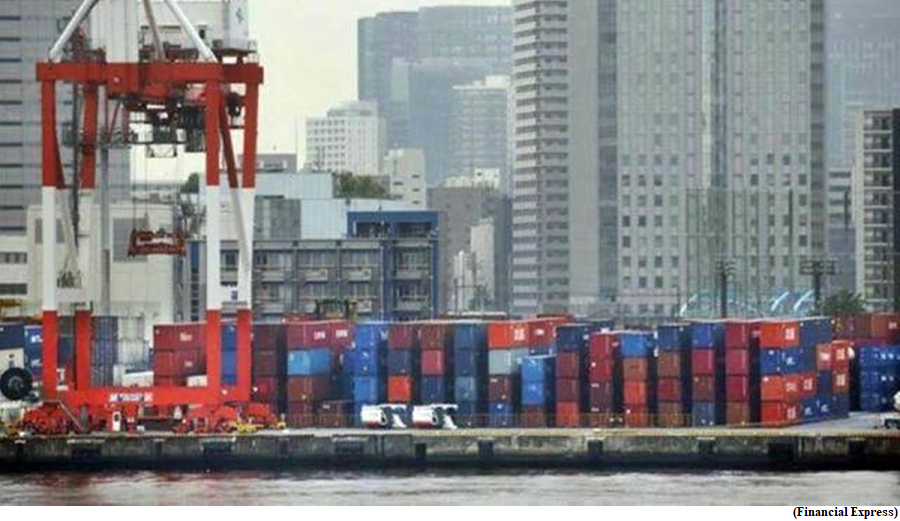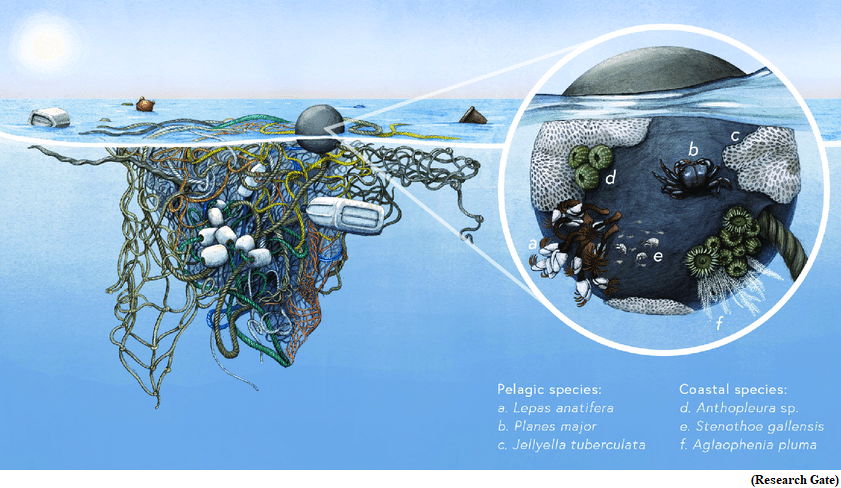India’s public stockholding dispute (GS Paper 3, Economy)

Why in news?
- Recently, India defended its minimum support price (MSP) policy for foodgrains at the World Trade Organization (WTO), saying that it not only benefited vulnerable farmers but also furthered global food security, by keeping global prices in check and making foodgrains affordable for least developed countries.
India’s stand at WTO?
- Under the WTO’s Agreement on Agriculture (AoA), all domestic support in favour of agricultural producers is subject to rules.
- India told the WTO Agriculture Committee that its public stockholding programme ensured that it didn’t have to import the vast quantities it needed for its food security needs and thereby cause the price of grains to spike—which, in turn, ensured that LDCs didn’t find it too difficult to procure these. It underlined the fact that such stockholding had nothing to do with subsidised exports.
- India is facing severe criticism at the WTO from nine members, including the US and rice-exporting Thailand, over its stockholding at administered price programme and for using the ‘Bali peace clause’ to protect its rice subsidies.
The Agreement on Agriculture:
- The AoA categorises domestic support as Green Box support (no or minimal trade distortive effect, such as R&D support) and Amber Box support (any support that distorts trade) with MSP, in principle, being considered such support.
- The aggregate monetary value of Amber Box is subject to member-specific reduction commitments. Green Box measures are exempt from reduction commitments.
- Developing countries’ public stockholding for food security is treated as Green Box support. Such support must have minimal trade-distorting effect and no specific production-favouring effect.
- Direct payments to producers that don’t distort production balance (type & volume), certain developmental measures in developing countries and certain direct payments under production-limiting programmes, and de minimis levels of support are exempted from reduction.
Bali Peace Clause:
- The AoA’s de minimis norms protect price support in any year, even if it is perceived as trade-distorting, if aggregate value of the product-specific support does not exceed 5% of the total value of production of the product.
- Non-product specific support less than 5% of the value of total agricultural production is also exempt from reduction. The 5% threshold applies to developed countries whereas for developing countries the de minimis ceiling is 10%.
- At the 2013 Bali conference, developing and developed nations arrived at a temporary window to protect countries’ food security programmes even if these breached the de minimis rule.
- The peace clause was to be in force for four years till 2017, by when a permanent solution was to be found. The peace clause comes with exhaustive disclosures requirements including full dislcosure of MSPs and annual procurement operations.
Why India’s public stockholding was challenged?
- Nine major grain exporters challenged India’s public stockholding in March 2023. India has invoked the Bali Peace Clause many times with respect to its grains procurement and stockholding programme.
- The countries allege that the heavily subsidised stockholding is affecting food security of other countries. India has argued the reverse, against the backdrop of the shortage of grains because of Russia’s war against Ukraine.
- It reportedly told the WTO committee that while global exports of rice amounted to 56 million tonne in 2021, those covered by the national food security programme got 58 mt. It has stated that it doesn’t export rice from its MSP-led procurement programme—rather, its exports are of premium quality rice.
- India has also relied on the data from its Open Market Sales Scheme that show that the biggest buyers have been state governments, and not private parties who could be suspected of exporting the grains.
- India’s accusers, on the other hand, say it has not provided enough disclosures and has no mechanism to check stocks from being exported. India says it will provide certain data once it has compiled it.
What’s next?
- Along with the G-33 grouping and African nations, India is seeking a permanent solution for public stockholding of foodgrains.
How coastal species are living on plastic debris in the ocean?
(GS Paper 3, Environment)
Why in news?
- In a recent study, researchers from Canada, the Netherlands, and the U.S. have reported that coastal lifeforms have colonised plastic items in the Great Pacific Garbage Patch.

The Great Pacific Garbage Patch:
- There are some water currents in the ocean that, driven by winds and the Coriolis force, form loops. These are called gyres.
- The North Pacific Subtropical Gyre (NPSG) is one such, located just north of the equator in the Pacific Ocean. It consists of the Kuroshio, North Pacific, California, and North Equatorial currents and moves in a clockwise direction.
- These currents flow adjacent to 51 Pacific Rim countries. Any trash that enters one of these currents, from any of these countries, could become part of the gyre.
- Inside this gyre, just north of Hawai’i, lies a long east-west strip where some of the debris in these currents has collected over the years. The eastern part of this is the Great Pacific Garbage Patch. It is, per one estimate, 1.6 million sq. km big and more than 50 years old.
- It contains an estimated 45,000-1,29,000 metric tonnes of plastic, predominantly in the form of microplastics.
- The numerical density of plastics here is around four particles per cubic metre. Mass-wise, however, heavier, more visible objects that haven’t yet broken down into smaller particles accounted for 92% of the plastics in 2018.
Findings of the study:
- The tsunami off the Japanese coast in 2011 contributed to the debris in this garbage patch. Until at least 2017, researchers had found debris washing ashore on the West coast of North America containing live lifeforms originally found in Japan.
- From November 2018 to January 2019, researchers collected 105 pieces of plastic debris from the eastern part of the NPSG, “the most heavily plastic-polluted ocean gyre on the globe”.
- Based on studying them, they reported that 98% of the debris items had invertebrate organisms. They also found that pelagic species (species of the open ocean) were present on 94.3% of them and coastal species on 70.5%. That is, organisms found on coasts were getting by on small floating islands of garbage (to humans) out in the Pacific Ocean.
- In all, they found organisms belonging to 46 taxa. While 37 of them were coastal, the rest were pelagic. Among both coastal and pelagic organisms, crustaceans were the most common. The coastal species were most commonly found on fishing nets whereas the pelagic species on crates.
Where were the organisms from?
- According to the them nearly all taxa were of Northwest Pacific origin, including Japan.
- Similarly, “most debris items (85.7%) did not have identifiable markings linked to origin, such as manufacture locations or company/brand names.” However, eight of the remainder were from East Asia and five specifically from Japan. Four items were from North America.
- The researchers found that 68% of the coastal taxa and 33% of the pelagic taxa reproduced asexually, while there was evidence of sexual reproduction among the hydroids and the crustaceans, among others.
- They reported a strong positive correlation between reproduction and mobility.
Neopelagic community:
- According to the, the introduction of a vast sea of relatively permanent anthropogenic rafts since the 1950s” has given rise to a new kind of “standing coastal community in the open ocean. They’ve named it the neopelagic community.
- While coastal species have been found on human-made objects in the open ocean before, they were always considered to have been “misplaced” from their intended habitats. The neopelagic community, on the other hand, is not misplaced but lives on plastic items in the garbage patch, including reproducing there.
- In an another study, researchers reported that polyethylene films had chemically bonded with rocks in China. This, in turn, is reminiscent, of the “anthropoquinas” of Brazil (sedimentary rocks embedded with plastic earrings) and the “plastiglomerates” of Hawai’i (beach sediment + organic debris + basaltic lava + melted plastic).



